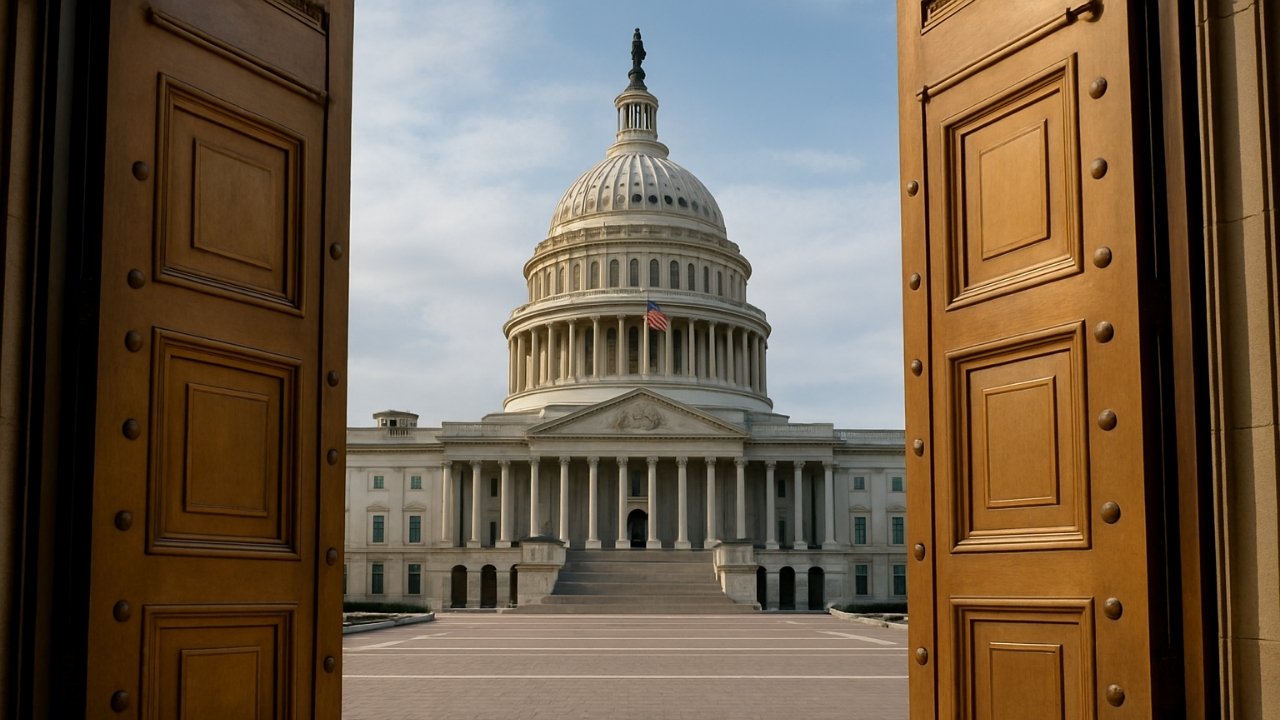The U.S. federal government shutdown that began on October 1, 2025, ended on November 12, 2025, after Congress passed and the President signed a bill to reopen operations and restore funding. According to the National Conference of State Legislatures (NCSL), approximately 750,000 federal employees were initially furloughed, and many more were required to work without guaranteed pay.
The official reopening law ensures retroactive pay for federal employees under the Government Employee Fair Treatment Act of 2019 and promises a return to normal funding flows for most agencies. However, the restoration of day-to-day services, program backlogs, and economic ripple effects will unfold in phases.
Table of Contents
Return to Work and Service Resumption
Federal agencies moved quickly to call back employees. However, simply reopening doors does not mean a swift return to full operational capacity. Many departments now face substantial work accumulation, including pending benefit applications, inspection backlogs, and deferred field operations.
For example, agencies aligned with public health, environmental oversight, and national parks resumed functions, but must first clear what had built up during the funding gap. Field stations and visitor facilities that were shuttered or operated at minimal capacity now need maintenance, staffing, and scheduling adjustments.
Agencies processing benefit programs are prioritising critical tasks such as payments for food assistance or disaster relief, while routine or elective operations may remain delayed. Although automated systems (for example, for direct payments) can resume rapidly, human-driven processes remain under strain. For workers who were furloughed, the transition back to full duty includes not only returning to their roles but also reconciling work paused mid-shutdown and stabilising team workflows.
Payroll Restoration and Back Pay Timing
Federal law requires that all employees furloughed or required to work without pay receive retroactive compensation. The Government Employee Fair Treatment Act of 2019 guarantees this outcome. Nonetheless, the mechanics of payroll processing mean timelines vary significantly by department. Transportation officials have indicated that air traffic controllers will receive approximately 70 % of their back pay within 24–48 hours, enabling critical infrastructure to stabilise quickly. Other agencies with more dispersed payroll systems may require several days to a full week to complete the necessary verification and distribution. Overseas or remote workers may experience further delays due to international processing and logistics.
Services, Programs, and Industry Impact
Program Recovery Timeline
Some public programs are in a position to resume almost immediately. Benefits such as the Supplemental Nutrition Assistance Program (SNAP) can restart once funding resumes, because they rely heavily on automated disbursement systems. Other services – including housing assistance, student loan reviews, regulatory approvals, and field inspections – require human oversight and will therefore take longer to normalise.
Industry Ripples
The shutdown created downstream effects in multiple economic sectors. Industries tied to federal operations — such as aviation, tourism, hospitality, and small-business subcontractors experienced disruptions when federal employees were absent or inspections were delayed. For example:
- Airlines faced staffing issues in air traffic control and TSA checkpoints, which slowed flight schedules.
- National parks and federal visitor sites either reduced hours or closed facilities, reducing tourism revenue for nearby communities.
- Contractors and local businesses that rely on federal procurement or on worker presence reported reduced demand and dips in revenue.
Economic and Community-Level Effects
The pause in federal operations exerted measurable pressure on the economy. According to estimates cited by the Treasury Department, the shutdown may have cost the U.S. as much as $15 billion per week in lost output. State governments felt the impact, too: grants, payments, and reimbursements were delayed, straining state budgets and local services. In “federal-town” economies, areas with large numbers of federal workers or contractors, businesses reported significant revenue declines during the shutdown.
Likewise, many households incurred debt or deferred payments when paychecks were missed. Even though back pay will restore income, some financial damage (for example, higher credit card balances or missed medical or utility payments) may take months to rectify. Contractors without guaranteed back pay face even longer recovery intervals and might permanently lose income or contracts.
What Returns to Normal and When
While the reopening of government marks the end of the shutdown, that does not mean complete normalcy will instantly follow. Some services will resume rapidly: benefit payments, internal agency operations, and essential functions can be back up and running in days. Other sectors will follow more slowly: field inspections, research programmes, large-scale procurements, and regional economic effects may take weeks or even months to reverse.
For individuals relying on automated systems, for example, food assistance or social benefits, the impact will likely be minimal in the near term. For communities whose economy depends heavily on federal employment or contracts, resurgence will require restored spending, renewed consumer confidence, and reactivated programmes. The lessons now for agencies and stakeholders centre on building resilience to future lapses, scheduling flexibility, and precise contingency planning.




